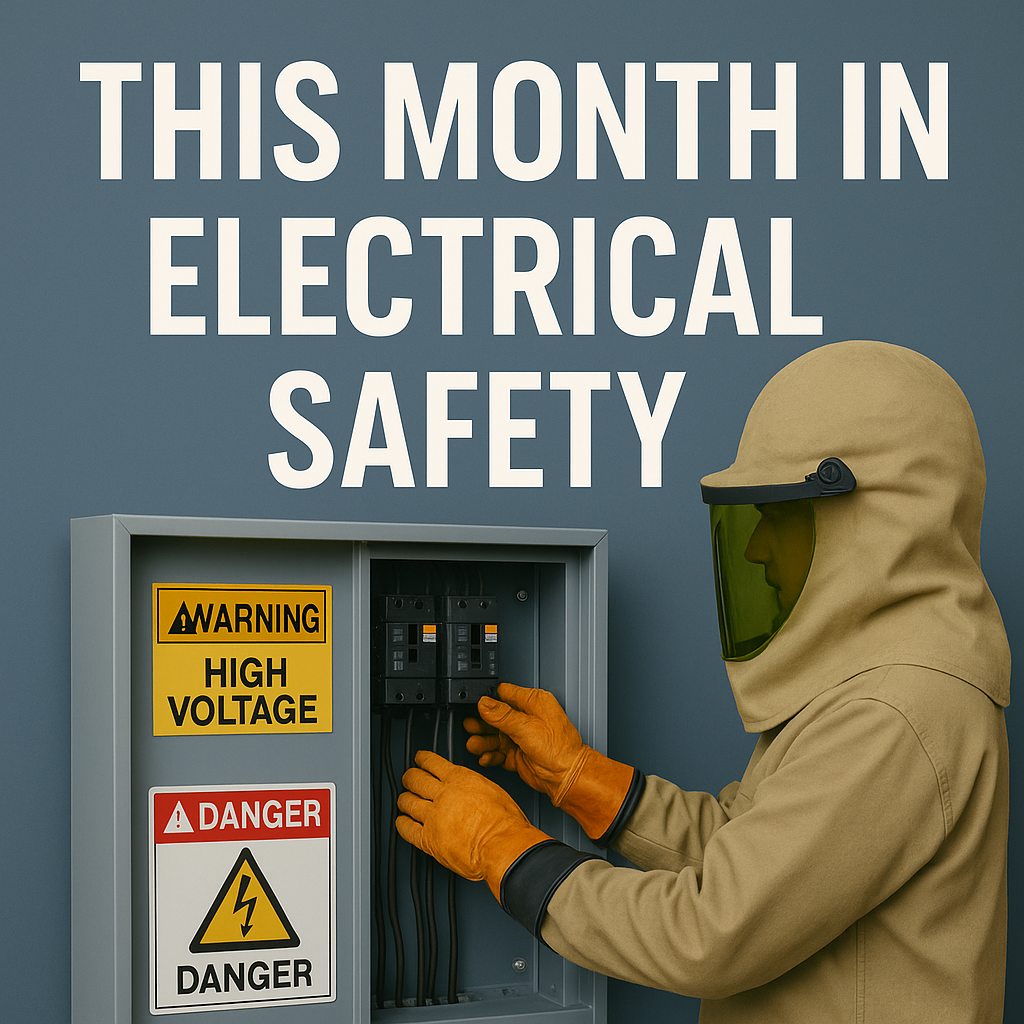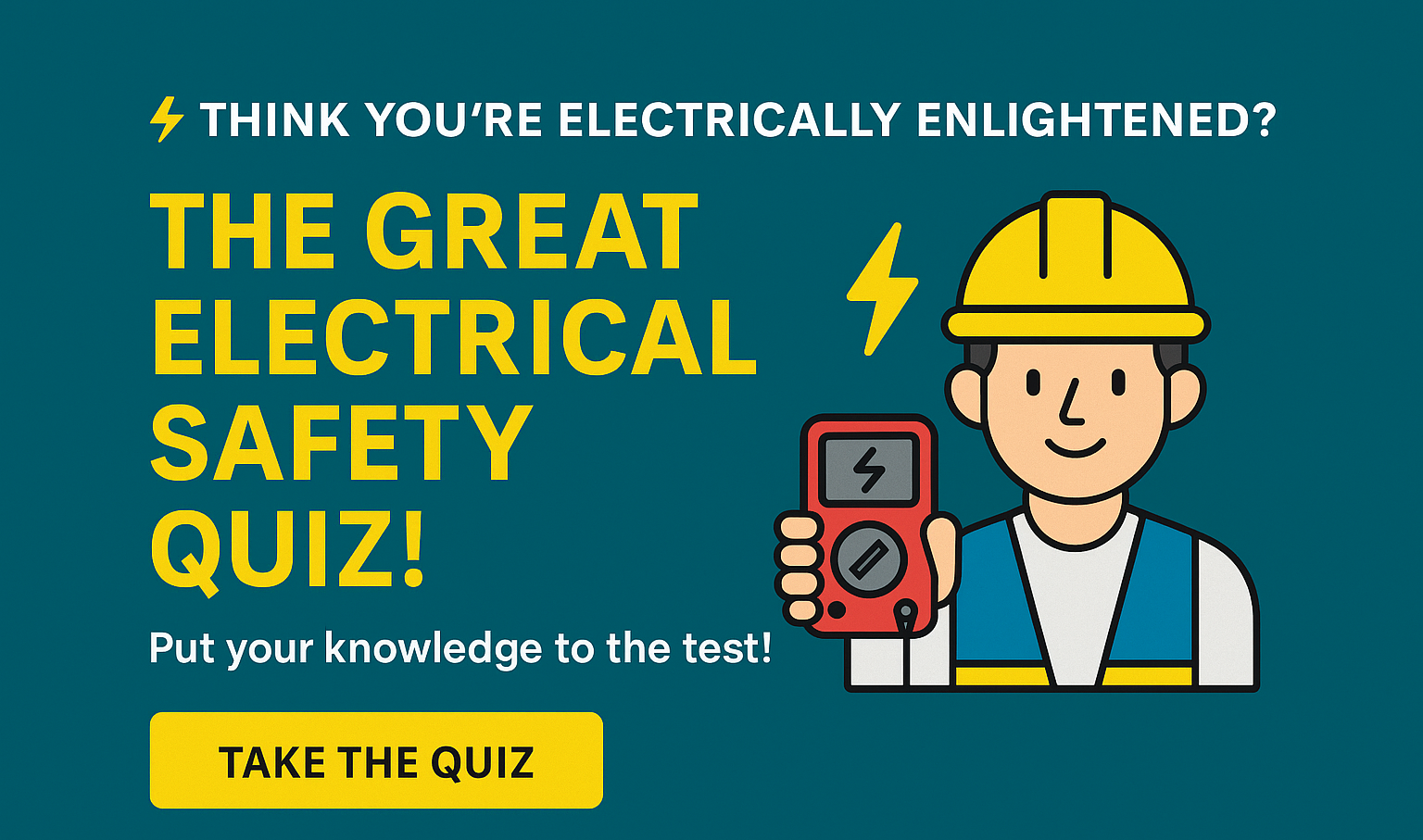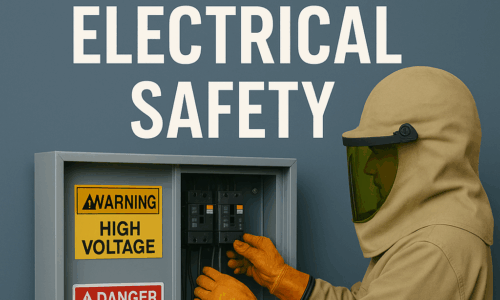This Month in Electrical Safety: August 2025 Edition
Welcome to the August edition of This Month in Electrical Safety, your monthly insight into the codes, case studies, and compliance curves affecting facility safety here in the U.S. and abroad.
This month, we zoom out to examine electrical safety trends on a global scale while keeping one boot firmly planted in the realities faced by engineers, OEMs, and facilities navigating U.S. regulatory environments.
From updated UL standards in North America to CE/UKCA/IEC convergence abroad, the spotlight this month is on global electrical safety compliance and what it means for multinational operations.
Let’s get into it.
U.S. Focus: NEC 2026 Proposal Cycle and Section 110.3(B)
NFPA’s Technical Committees are currently deep into public inputs for the NEC 2026 cycle, and one section drawing industry-wide attention is 110.3(B), which governs installation and use in accordance with listing instructions. The conversation this round? Strengthening language around “intended use” and clarifying how field evaluations play a role in supporting equivalency when listings are absent or non-applicable.
At Lewis Bass, we’re committed to supporting broader AHJ recognition of Field Evaluation Bodies (FEBs) that meet NFPA 790/791 standards. Why? Because it closes a major gap for OEMs shipping innovative or international equipment into U.S. markets, without compromising global electrical safety compliance principles.
Watch this space in future months as proposal drafts go public.
International Insight: CE + UKCA Convergence and the Role of EN Standards
As of August 2025, the U.K. has extended CE mark recognition through 2026, but with tighter scrutiny on technical documentation. Meanwhile, in the EU, EN 60204-1 updates are triggering new risk assessment documentation requirements for machines entering Germany, Italy, and France. International manufacturers need to ensure their Technical Construction Files (TCFs) are robust, and where applicable, translated.
For U.S. clients exporting to Europe, a common misstep we’ve seen is treating CE marking as a simple label when it’s actually a declaration of safety conformity to harmonized directives. We often advise dual path strategies: one for CE/UKCA and one for North America, ensuring total global electrical safety compliance across all sales regions.
Need help with a TCF review? That’s right up our alley.
Cross-Border Risk: Importing Non-Listed Equipment into U.S. Sites
With supply chains still playing catch-up, many U.S.-based integrators are sourcing unlisted machines from Asia and Eastern Europe to meet production deadlines. That’s not inherently a problem, but skipping a field evaluation is. AHJs in California, Texas, and the Midwest have all recently flagged unlisted imported equipment for shutdown pending evaluation.
This is a growing pain in global electrical safety compliance when the equipment is safe enough, but not documented as such. That’s where a third-party field evaluation (like those performed by Lewis Bass) bridges the gap. We inspect, test, and document compliance in line with NFPA, NEC, and even your insurer’s needs.
Bonus: We can also work with your overseas suppliers to pre-screen equipment designs before they land on U.S. soil.
Global Case Study: Safety Upgrade in a Semiconductor Fab – Singapore
In July, a company Lewis Bass has worked with on previous semiconductor projects completed a compliance retrofit of semiconductor tools at a major Singapore fab. The equipment, originally manufactured in the U.S., had been modified on-site over time, and was no longer compliant with IEC 61010 and SEMI S2 standards required by the local regulatory authority (SPRI).
What’s notable here? Even U.S.-built machines need adjustments to meet foreign compliance benchmarks. Our old client ended up having to generate updated LOTO procedures, re-integrate residual current protection, and spent many months documenting this conformity through local-authority-accepted protocols.
Toolbox Tip: Universal Warning Labels that Work on Every Continent
Want to avoid relabeling every time a machine crosses a border? Consider adopting ANSI Z535-compliant warning labels that incorporate ISO 7010 pictograms and multilingual hazard language. These hybrid labels are increasingly recognized by AHJs in both North America and Europe, and can help your equipment pass visual inspections in multiple jurisdictions.
Pro tip: Use durable polyester labels rated for 5+ year exposure and apply them only to clean, flat metal or plastic surfaces.
This Concludes Another Month in Electrical Safety.
As summer winds down and Q4 2025 project budgets kick into gear, now is the time to think beyond just meeting the local code. Think global. Whether you’re shipping equipment overseas or bringing it in from abroad, the key to minimizing delays, red tags, and insurance snags is simple: proactive, documented, and adaptable global electrical safety compliance.
Until next month…be safe, stay sharp, and mind your circuits!
— The Lewis Bass Team



